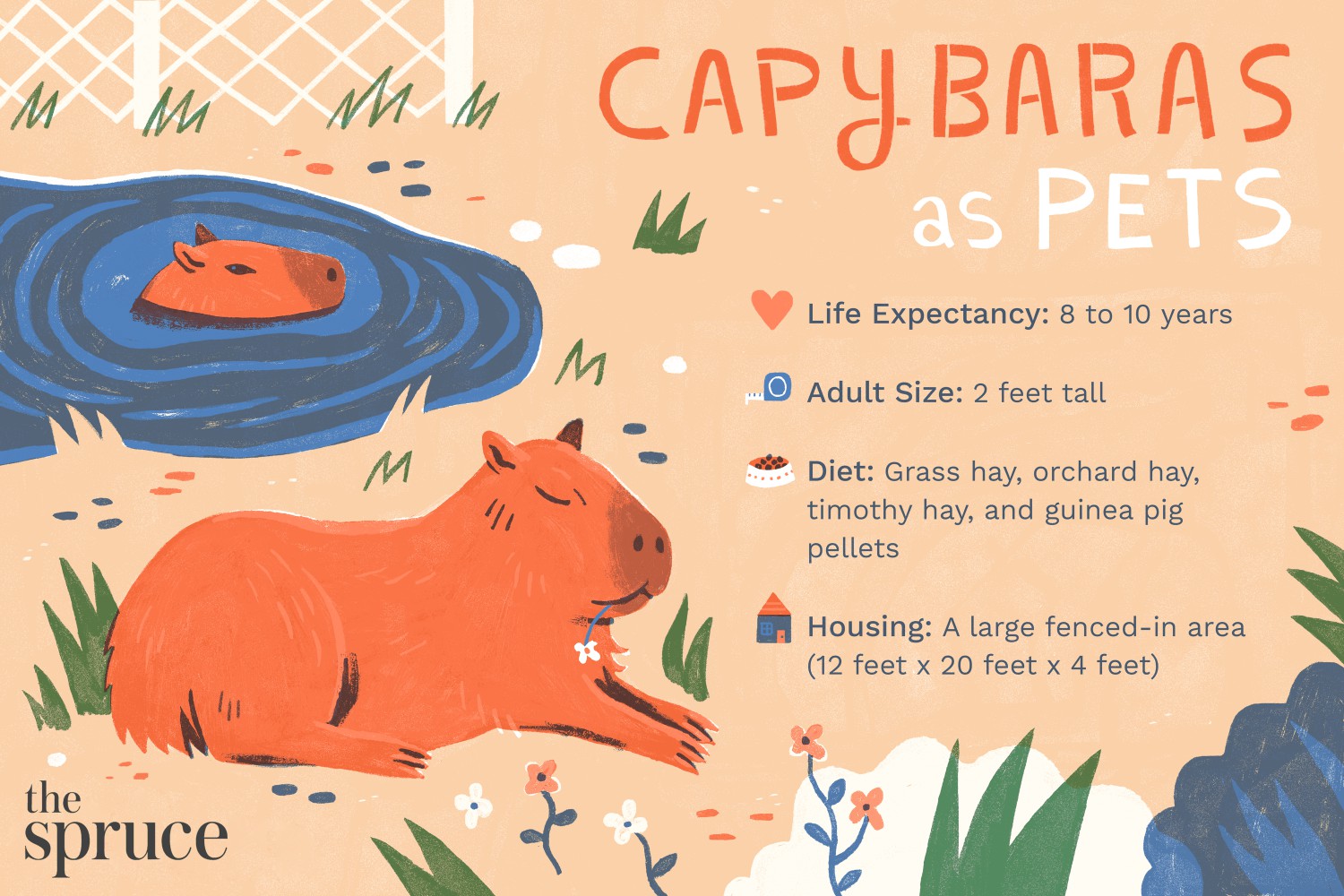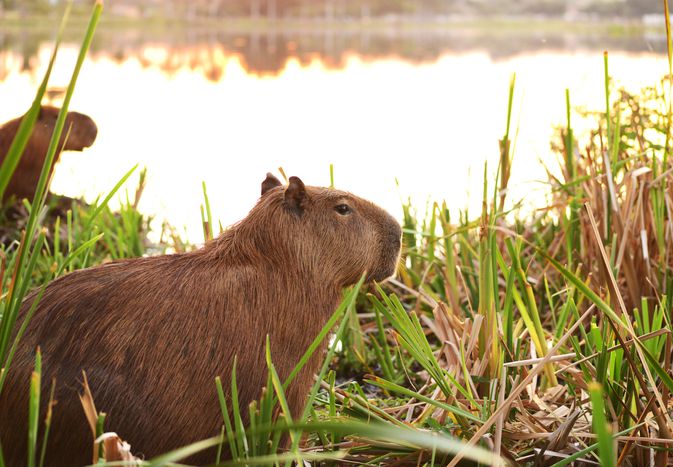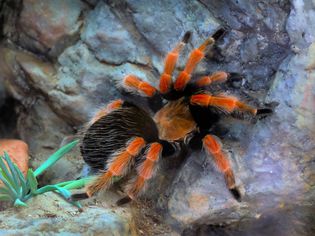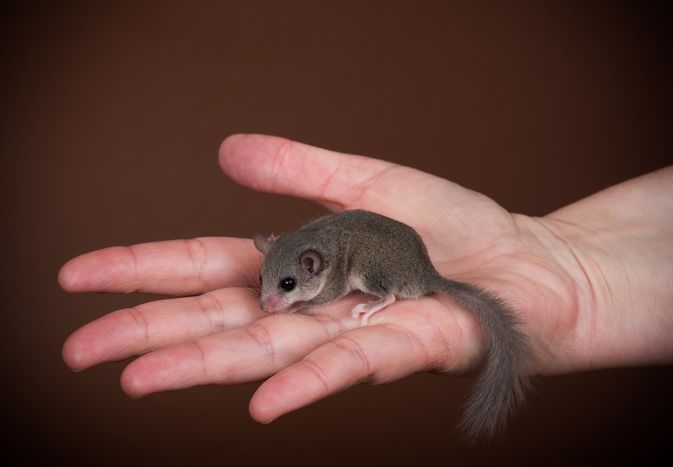Capybaras, often affectionately termed giant guinea pigs, require more care than their smaller relatives. As the largest rodents in the world, they can weigh up to 170 pounds. They are sociable and generally pleasant as pets, thriving best in pairs or groups. Their large size necessitates ample space and easy access to a pool of water.
Species Overview
COMMON NAME: Capybara
SCIENTIFIC NAME: Hydrochoerus hydrochaeris
ADULT SIZE: 36 to 48 inches tall, weighing up to 170 pounds
LIFESPAN: 8 to 12 years in captivity
Can You Own a Pet Capybara?
Before bringing a capybara into your home, consider both legality and ethical concerns. Here's what you need to know.
Legality
Depending on your location, it may be illegal to own a capybara. Some areas require a permit or health certificate. For instance, capybaras are banned in California and Georgia, but they�re legal in Texas, Pennsylvania, and New York. However, they're prohibited in New York City's five boroughs. They are legal to own in Texas, Washington, North Carolina, Arizona, Arkansas, Indiana, Florida, and Tennessee.
Ethics
Owning capybaras is both a significant expense and commitment, considering they weigh about 170 pounds each. These large animals require an environment similar to that found in professional zoos.
Things to Consider
Capybaras are large, expensive pets that need a great deal of living space which includes aquatic space. They are social creatures that do best in pairs, so you would need to purchase and house a pair of them, either two females or a male and a female; two males, even if they're neutered, may be aggressive toward each other. Unless you're able to carve out this kind of living situation, a capybara is not for you.
Capybara Behavior and Temperament
Hand-reared capybaras are usually tame, but with adult capybaras, patience is needed as they adjust to new environments. They rarely bite humans, but may do so if threatened or provoked, using their large teeth defensively. Generally, capybaras are nervous and shy.
Males have scent glands atop their snouts for marking territory. Females have these too, though less visible. Both sexes use anal glands for marking. Capybaras are very vocal.
In Central and South America, capybaras live in large groups near standing water as their dry skin requires constant hydration. They have webbed feet, making them excellent swimmers, and can hold their breath underwater for about five minutes
Capybaras prefer areas abundant with grasses for food and predator camouflage. Like pigs, they may cover themselves in mud to regulate body temperature and prevent sunburn due to their thin fur and few sweat glands.
Just like guinea pigs, capybaras are highly social and communicate using sounds such as purrs, barks, grunts, whistles, squeals, and coughs. Isolated capybaras may become stressed and depressed. Imitating their sounds can offer reassurance, but it's best to provide a companion for social interaction.
Click Play to Learn More About the Unique Capybara
Housing
Capybaras require marshy environments similar to their native South American jungles.
Capybaras shouldn�t be kept alone, so ample space is needed for them. Provide a large fenced area, about 12 by 20 feet per pair, and a safe indoor or covered enclosure at night. Ensure the fence is at least 4 feet high with no gaps they can squeeze through.
Provide items for safe chewing, like untreated wood or large dog toys that can be picked up or floated.
Capybaras are diurnal; they need daily exposure to the ultraviolet rays of the sun. They can handle a vast gradient in temperatures from 45 degrees Fahrenheit up to 100; however, they require a warmer area to retreat to on cold days and a watering hole for cooling off when it is sweltering. If the seasonal temperatures get too cold where you live, and they must retreat indoors for the season, make sure you provide UVB lighting indoors for at least 12 hours per day. If their enclosure drops cooler than 45 degrees Fahrenheit, provide heat lamps to warm up the area. If you live in a subtropical or tropical zone, then they should be able to live outdoors most, if not all, the time.
Specific Substrate Needs
The ideal substrates for capybaras are hay, straw, sterilized soil, or grass, as these can be easily replaced to keep the cage clean and odor-free.

The Spruce / Kaley McKean
What Do Capybaras Eat & Drink?
Capybaras only eat about three to six plant species in the wild. The most common ingredient in a pet capybaras diet should be high-quality grass hay offered in piles or bales. Orchard hay and Timothy hay are both readily available from pet stores and large animal feed stores.
This hay will not only provide the necessary nutrients and roughage a large rodent needs but will also help keep a capybara's teeth at an appropriate length. Like other rodents, capybara teeth continuously grow throughout their lives. Hay, grass, wood, and other course objects help to file down their teeth. If their teeth do not file down, they will develop an overbite, which can lead to mouth disfigurement and pain while eating. If that happens, they will require the care of a specialized exotics veterinarian.
Also, capybaras should be fed guinea pig pellets with vitamin C in a feeding bowl every day. Like guinea pigs and humans, capybaras do not produce enough vitamin C naturally in their bodies. These pellets help prevent scurvy, a vitamin C deficiency. You can give vegetable treats, like carrots, apples, or yams, but only sparingly. Too much sugar—even natural sugar—is addicting. You do not want your capybaras to become selective eaters.
Spread hay around the enclosure; this will help recreate natural grazing. You can allow your capybaras to graze on your grass as long as you are 100 percent certain that there are no toxic weeds, fertilizers, or insecticides.
Monitor their droppings. Normal poop looks olive-shaped. If it gets too loose, your pets may be getting too much sugar or moisture. It may be a sign they need more hay and roughage and fewer treats.
Common Health Problems
Aside from vitamin C deficiency, they are relatively hardy creatures. Like most rodents, capybaras are prone to respiratory infections and infestations with mites or lice in their fur. To prevent these issues, keep the pen clean. If your capybara appears listless or stops eating, he or she may have a digestive problem. Now would be a good time to call your exotics veterinarian to make sure your capybaras stay in good health.
Exercise
As a semi-aquatic species, capybaras need the ability to loll in the water and swim sometimes. Provide a pen that will allow your capybaras to move around freely with a pool of water that allows for swimming and wading (over 3 feet deep). The pool and a shaded area should be accessible at all times.
Grooming
Capybaras are pretty low-maintenance in the grooming department, but they will still need occasional baths and grooming.
Shedding
Capybaras are not big shedders, just a few hairs at a time. Nothing to worry about if you're going to adopt one.
Bathing/Grooming
Grooming is a calming icebreaker among capybaras. Offer your new capybara some food and gently comb them; it can be a relaxing, bonding experience.
Size Information
Capybaras grow to be about 3 to 4 feet tall, and adults weigh up to 170 pounds.
Training Your Capybara
Yes, you can train a capybara, including house training them and leash training.
House Training
Capybaras are intelligent, social animals that can be taught to be house-trained. You can try both wet and dry pans. You'll have the most success training a capybara when it's young. Just be aware, these giant rodents have a habit of eating their own waste. We know, it's gross. But they are indeed wild animals and do in fact get nutrients this way.
Leash Training
Some people are able to train their capys to wash on a lead, leash, or harness. If you join an online capybara community, you're sure to get loads of advice on how to do this.
Pros & Cons of Keeping a Capybara as a Pet
Capybaras shed very little, have no odor, and aren't aggressive, though it's best to let them come to you if they seek affection. But, capybaras are wild animals: they need access to a lot of water, which is where they prefer to defecate. Capybaras might be better off as the pets you visit at the zoo. Capybaras are shy around humans and it can take them time to warm up to you. These highly social creatures prefer being together in groups, so they are not necessarily happiest as pets and do better in the wild or in a zoo.
Purchasing Your Capybara
Ideally, try to buy a capybara from a reputable breeder. The cost of these creatures runs about $1,000 to $3,000. Females are usually more expensive. Keep in mind, you have to buy at least two. First, make sure there is an exotics veterinarian in your area who has experience treating large rodents like capybaras.
No matter what you do, never take in a wild capybara. You will not be able to domesticate them, you will not know if they have been exposed to diseases, and you will shorten the animal's life by causing them undue stress.
Reproduction/Breeding
The breeder should be able to give you tips on handling your capybara. As well as some information about its origin and health history. Give the ones you're adopting a really good once-over: make sure they are alert and active, although they may take time to warm up to people they do not know (even those bearing food). The fur should be soft without any bald patches or redness, which may be signs of parasites or mites.
Also discuss spaying/neutering with the breeder, as you don't want to become a breeder yourself.
Similar Pets to the Capybara
If you are interested in pet capybaras, check out:
- Guinea pig
- Patagonian cavy
- Prairie dog
Otherwise, check out other exotic animals that can be your new pet.
- Are capybaras really rodents?
They are! They're the largest rodents on the planet. We know when people think about rodents they think about little animals, but this 170 pounder is a rodent just the same.
Can you domesticate a capybara?No, capybaras are not able to be domesticated. With training and care, they can be tame and friendly.
What is the lifespan of a capybara?”Up to 12 years old.
Related Article

Cat-Proofing Your Garden: Protecting Your Plants and Pets

Leash Training 101: Teaching Your Dog to Walk Nicely

Protecting Your Dog from Parasites: Worms, Fleas, and Ticks

Fun and Safe Outdoor Activities for Your Dog

The Benefits of Pet Insurance: Why You Should Consider It

How to Care for a Pet Mexican Red-Knee Tarantula

Should You Keep a Southern Flying Squirrel as a Pet?

Should You Keep an African Dormouse as a Pet?










Comments on "Should You Keep a Capybara as a Pet?" :